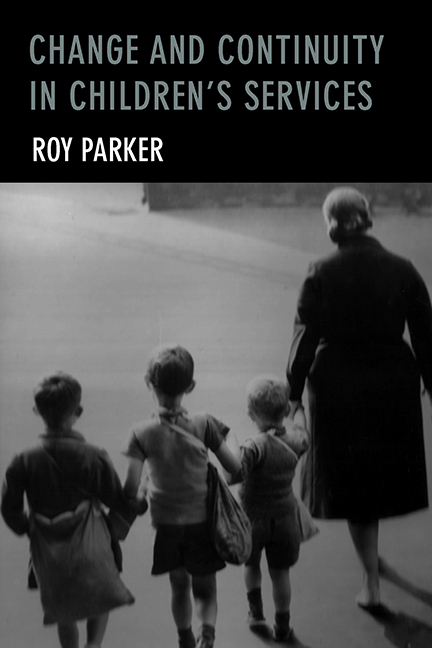Book contents
- Frontmatter
- Dedication
- Cover illustration
- Contents
- Acknowledgements
- Preface
- 1 Introduction: patterns of change and continuity
- 2 Residential child care: an historical perspective
- 3 From boarding-out to foster care
- 4 The evolution of landmark legislation
- 5 Getting started with the Children Act 1948: what do we learn?
- 6 Child care in the melting pot in the 1980s
- 7 Trends, transitions and tensions: children’s services since 101 the 1980s
- 8 Reflections on the assessment of outcomes in child care
- 9 The role and function of inquiries
- 10 Evidence, judgement, values and engagement
- 11 Emerging issues: looking ahead
- Notes and references
- Bibliography
- Index
7 - Trends, transitions and tensions: children’s services since 101 the 1980s
Published online by Cambridge University Press: 07 March 2022
- Frontmatter
- Dedication
- Cover illustration
- Contents
- Acknowledgements
- Preface
- 1 Introduction: patterns of change and continuity
- 2 Residential child care: an historical perspective
- 3 From boarding-out to foster care
- 4 The evolution of landmark legislation
- 5 Getting started with the Children Act 1948: what do we learn?
- 6 Child care in the melting pot in the 1980s
- 7 Trends, transitions and tensions: children’s services since 101 the 1980s
- 8 Reflections on the assessment of outcomes in child care
- 9 The role and function of inquiries
- 10 Evidence, judgement, values and engagement
- 11 Emerging issues: looking ahead
- Notes and references
- Bibliography
- Index
Summary
Each period has witnessed changes in the manner in which our children's services have been organised. The legislation to which they are subject changes, different problems become more or less pressing, policies are re-thought and practices modified. However, over the last 30 years many such changes have been more pronounced: legislative activity has intensified, there have been numerous inquiries into child deaths that have led to more procedural guidance and new issues have arisen, all within the context of a notable increase in information. Nonetheless, certain issues and tensions have persisted, as have significant gaps in our understanding.
I Looking at some statistics
Statistics tend to be treated with a measure of scepticism. Undoubtedly they have their shortcomings, but they provide a means of detecting or illustrating trends that might otherwise be overlooked. Many changes happen gradually and are hardly discernible in the short term; but where we have a sufficiently long run of data it becomes possible to see what is changing, what is not and what is subject to the ebb and flow of events. However, we have to be careful that definitions (and their interpretation) have not changed and that there is a consistency in what is recorded. In short, we have to do the best we can with what we have and, as far as the children's services are concerned, what we have is as good as most other social statistics and better than many. Let us look at some of the more significant trends over the last 30 years or so.
The number of children in care has fluctuated considerably. For example, in England at the end of March 1980 the figure stood at 95,300; in 1994 at 49,000 and in 2013 at 68,110. How are these variations to be explained? The answers (and there are several) will depend partly upon whether we seek to account for the increases or the reductions and, of course, we have to bear in mind the rates per 1,000 of the population under 18 that these figures reflect. Furthermore, of course, the count on one particular day (which these figures are) does not tell us how many children entered or left the care system during the preceding year.
- Type
- Chapter
- Information
- Change and Continuity in Children's Services , pp. 101 - 116Publisher: Bristol University PressPrint publication year: 2015



